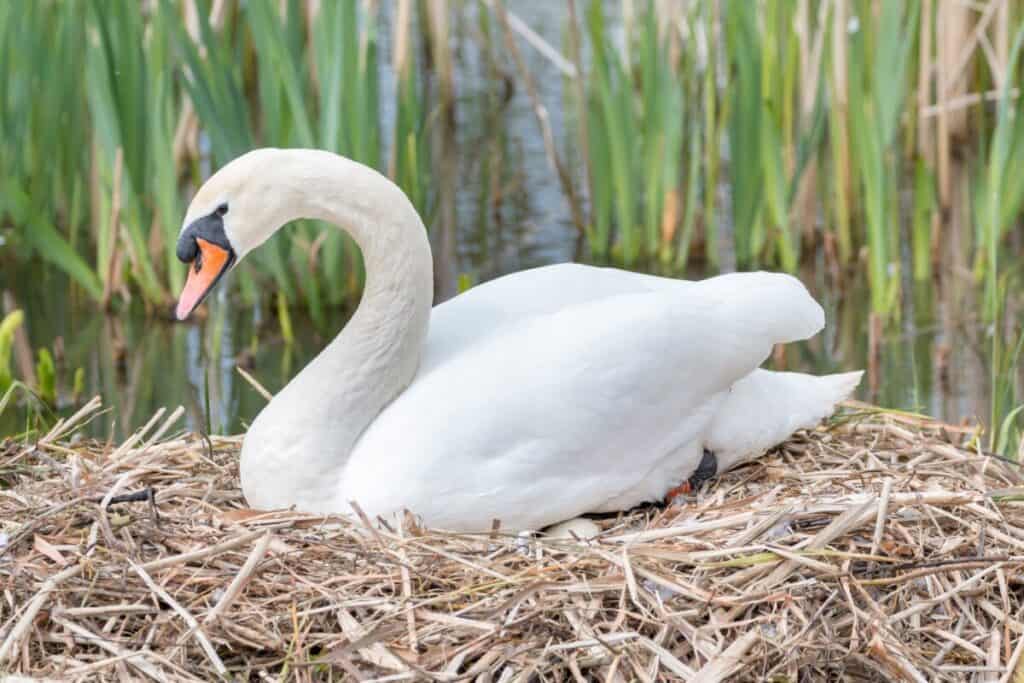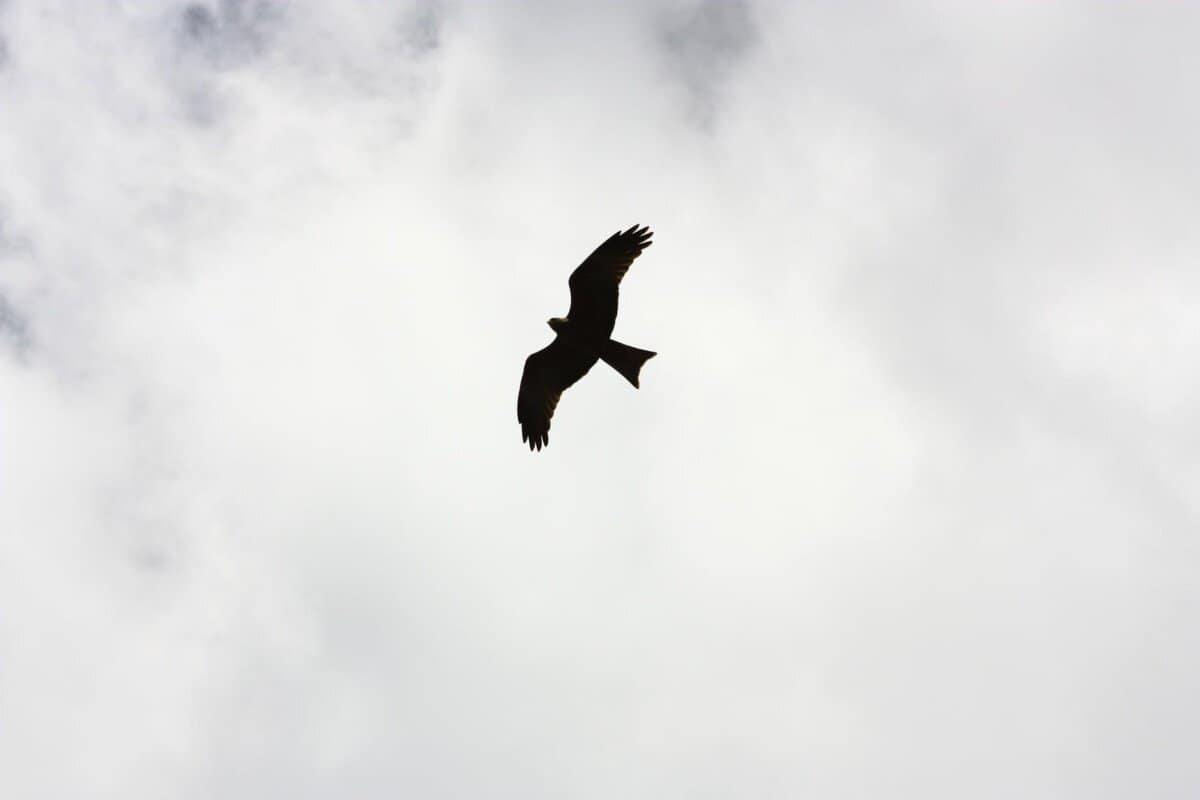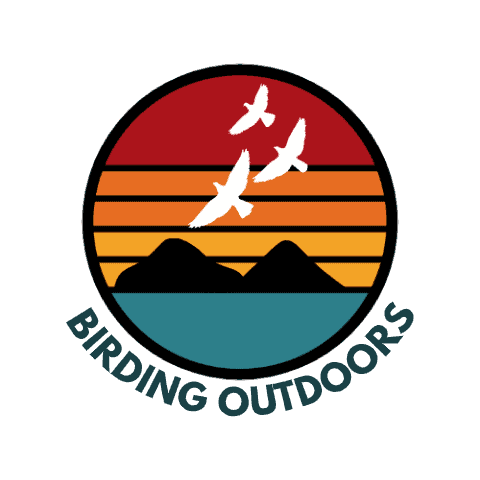Birding For Beginners: A complete guide + pictures & links!
We’re reader-supported; we may earn a commission from links in this article.
Are you new to birding? That’s GREAT because here I will run through a complete guide on the important aspects of birding for beginners! I was also recently a beginner in birding and I found a lot of difficulty in finding a nice compiled summary in one place where I can find resources for birding. So I decided to pen this article myself! Here’s hoping you would like it:
Reasons To Start Birding
If you’re reading this, then chances are you’re probably on the fence on whether you should start dipping your toes in birding! Before we embark on this overwhelmingly fun journey, let me do some convincing for you by giving you some great reasons to start birding!
1. Birds Are Everywhere

Out of all the hobbies that are out there, there aren’t many hobbies that can be done simply EVERYWHERE. A great hobby should be able to be done anywhere! This means literally everywhere – even globally. Many other hobbies like mountain biking or skating require a specific location and terrain for you to enjoy them.
Well, bird watching is a whole lot different. Birds are EVERYWHERE! This means that you can go bird-watching wherever you are on the planet. In fact, some people go traveling for the purpose of bird watching and seeing a new set of bird species they haven’t yet seen!
Birds are also everywhere within your local vicinity. They are up in the trees, along the sidewalk, sitting on street lamps, and in the forest. Wherever you want to start bird watching, they will always be around. Well, what about the places with extreme weather conditions like the desert and Antarctica? There are birds there too!
Not only are birds everywhere, but they also have sheer biodiversity too! Their colors, sizes, and shapes all differ in different parts of the world. As birds follow migratory paths, it is also possible to see birds who come from all parts of the world too. It’s rare to be able to find a hobby like this that can be done anywhere. So pick it up! 🙂
2. Bird Watching Is A Low-Entry Hobby

Many other hobbies that others pick up require lots of gear, expertise, and practice just to get started. BUT, to begin as a bird watcher, all you need to do is begin to appreciate the birds around you. They’ve been around all along, it’s just that you probably haven’t even noticed them!
Why is it a low-entry hobby? That’s because to start bird watching carefully, it doesn’t even require any gear, even a pair of binoculars! A pair of binoculars will definitely be needed to help you progress as you go along and want to observe birds from afar. But that’s not really needed if you wanted to just get started.
Purchasing a pair of binoculars is all you really need to enjoy this hobby. All the other gear that you would need are not entirely essential. Hear me out: A pair of decent, durable binoculars is enough to last you for years on end, with no extra costs you need to spend on this hobby.
Of course, if after a while, you want to progress into birding photography, then that will be entirely up to you to purchase a good camera and lens for birding. No pressure! There really is no need to get a good camera for pictures unless you want to. All you really need to get started bird watching is simply your sense of sight and hearing!
3. Birding Isn’t Entirely Seasonal

If you think about hobbies that are also sports, you may have guessed it, they are highly seasonal. One would not expect to be able to play or practice snowboarding during the summer. This is because lots of hobbies out there are dependent on the seasons.
Bird watching is an evergreen hobby that is in fact, enhanced further by the change of the seasons. Birds perform their migratory movements in the months of spring and fall, and these are the times when bird watchers get the most excited. Bird watchers all over the globe get excited and ready to take pictures of birds from a different region without even traveling! The birds come to you – how cool is that?
What’s better is that some resident birds remain put all year round, so you can get a chance at seeing them with a different plumage, even during winter! Now if you’d like to know a little bit more about the birding season and bird migratory periods, you can check out an article I wrote here.
4. Birding Allows You To Appreciate Nature

Nature’s a beauty ain’t it? Bird watching will make you love nature even more! When you step out into forests, jungles, wetlands, swamps, and lakes, you will slowly learn how beautiful our wild world is.
However, with the increasing amount of climate change and the destruction of bird habitats around the world, it’s become increasingly important for us to understand how we can combat it and prevent it. When you step into bird watching, you’ll soon realize that birds and other wildlife and vegetation are intertwined and they coexist in a functioning ecosystem. Just remember that no one is born an expert in conservation or in the environment, so start somewhere! Birding is a great way to start educating yourself on all environmental issues in your region.
As you learn more about the behaviors of the birds – mating, feeding, migration, you’ll soon discover how much the environment need to be conserved for our own sakes. Birds bring a new perspective of our place and responsibility to protect the Earth.
5. The Birding Community Is Amazing

Unlike some hobbies, bird watching is not a solitary hobby. Bird watchers who think alike gather to enjoy the hobby together, or shall I say birds of the same feathers flock together! 😀
Birds tend to flock to a location where they can find a more abundant source of food and a higher concentration of natural resources. As such, it is common to also spot other bird watchers in the area who want to spot a bird or two. Generally, they tend to be friendly and willing to help you out in your journey in bird watching.
Beyond just casual interactions, there are also bird watching groups on Facebook and official associations that you can be a part of. I personally enjoy the community of bird watchers in the Facebook group I’m in, as they always help each other out in helping to ID birds. The best part has to be the encouragement they give to each other, and the insights they give to track down a rarer bird or a lifer (the first of a bird species that you ever see).
Joining an official association for bird watching can instill a sense of belonging to a community to develop this similar interest together. It’s a fantastic hobby to step out of your comfort zone, and share experiences with others. We humans aren’t meant to do all things solitarily!
If you’d like to read up on 5 more reasons to start birding, then you can go read an article I wrote on the Top 10 Convincing Reasons To Start Bird Watching Today!
Bird Identification

As a beginner birder, you should learn that bird spotting is 20% of the game, and identification of the bird spotted actually takes up the bulk of 80%. As such, identification of the right bird species is important. As a beginner, you probably won’t be able to recognize any of the birds you see around you, and that’s okay! I’ve also struggled with that a lot. Learn to be teachable and humble always to keep learning.
Learning to Identify birds is an important basic skill that all birders need to learn to pick up if they want to improve on their journey and their knowledge of birds. Spotting a bird and not knowing its identity feels a little funny isn’t it? It’s like meeting someone for the first time and not getting to know their actual name and identity. It’s a little funny, isn’t it? I’m sure you get what I mean as the same also applies to birding.
Bird Identification By Sight

Birds are most often identified by their sight. Visual cues of the bird such as size, shape, plumage, behavior, habitat, season are a big part of how a bird can be identified. Sometimes a small difference in one of these aspects can make the difference between two very similar sub-species. From my research and experience, there are 6 main key points that all birders need to take note of when they identify a bird by sound. Let me explain in detail.
1. Size

As a beginner, using this parameter for bird identification is usually good enough as a starter. More often than not, you’ll only make a short glimpse of birds that fly by which are too quick to be spotted. As such, you need to be familiar with the common birds in your area.
If the American Robin is a common bird in your area, get familiar with its size. You should also learn how to tell how much bigger a Blue Jay is from an American Robin. You’ll also benefit from learning the bigger size of a Great Blue Heron. These common birds will then serve as a common reference point for both yourself and other birders. When you come across a bird with a similar size to one of these reference birds, it will be much to take size into consideration when narrowing down the list of possible birds.
As a beginner, don’t make the mistake of only being concerned with the colors of a bird. This is because the color of a bird’s feather can differ among the sexes and across different seasons. You should also take note that size is relative to the distance you are from the bird, so there are other parameters you should also keep in mind.
2. Shape

This particular aspect of birds tends to be overlooked because of how subtle it is. Birds do not just come in different sizes but also in different shapes. Some birds can be plumper, and some can be more streamlined and aerodynamic.
You can start by observing the silhouette of a bird. Silhouettes are common especially if the light does not happen to be in your favor. We can’t choose if the bird decides to stand in the light or not. Just from the silhouette alone, we can deduce lots of information. This is especially useful for identifying raptors or other birds of prey soaring in the sky.
When observing the silhouette, take note of the posture the bird is in. Does the bird tend to lean forward more or stand upright? These are often subtle clues as to how the bird behaves. From determining their silhouettes, you can also check back with your reference birds that you know well, then compare them to get some clues.
3. Plumage

Maybe you’ve heard the word plumage before, and you’ve always wondered what it is. Don’t worry, I was once curious and clueless too! The plumage of a bird is basically the layer of feathers that cover a bird. These include features such as the pattern, color, and arrangement of the feathers. The patterns and colors can be different in different species, sexes, and age classes.
Species
Different species have different plumages. I want you to focus on the overall plumage pattern instead of picking at the small features of a bird. Oftentimes, you may only be able to see birds with a quick sighting. As such, it is practical to take quick mental note of the light and dark colors of the bird’s plumage. What I mean by this is that you would ask yourself these questions: “What are the light colors on this bird?” Notice the bright yellows, blues, or white streaks on a bird. You then ask yourself: “What are the dark colors on this bird?” Notice the dark browns, blacks, and dark blues.
To be effective in putting an ID on the birds in your area, it’s important to do a little research on some common patterns of birds in your area. Let’s say you encounter a flash of red flying past, then you would consider the Northern Cardinal as a possible bird in your list. If you have a bird guide, you can refer to that, or if you plan to check it up later, then you can note it down first.
Gender
Be aware of the gender of the bird. Generally speaking, most birds that have colorful plumage are males. The colors are used for attracting a female to be their mate. While it is important to recognize the colorful plumages of males, take note of the more drab plumages of female birds too, because that may be an area that you are missing out on when trying to ID a bird in question.
Age
Different age classes affect the plumage of birds. Chicks, juvenile birds, and adult birds often have different plumages. Chicks and juvenile birds tend to have less developed plumages that may only start to change into adult plumage at a certain life stage when they are sexually mature. So do bear in mind that if you can’t seem to ID a certain bird, do entertain the thought that it could be a juvenile bird.
If you have a proper picture or clear sighting of the bird, you’ll want to look more closely at the patterns on the different parts of the bird. For example, if you see a bird with a black-colored cap, it could provide possible leads such as the Black-capped chickadee. However, do pay attention to the location of the black streak and other plumage features as it could also Black-capped vireo. Keep all this in mind when you refer to field guides later on.
To keep this article nice and short for beginners, I have compiled the rest of my bird identification tips in another article for you!
Birding Online Resources
As a beginner, the resources available online for birding can seem really scattered and messy. No fear! I have also once felt overwhelmed by all the information available and have taken the time to compile some of the best resources for you! You can start at the Birding Outdoors YouTube channel first! It has loads of birding content for you to enjoy 🙂
I tend to find that using birding apps, reading websites, browsing bird identification websites, listening to birding podcasts, and watching birding YouTube channels help a lot when you want to get a feel of the hobby! And so I’ve created a page of birding resources for you! Do check it out 🙂
Birding Blogs
I made a YouTube video on 6 blogs you should watch for beginner birders! Do check it out 🙂
Birding Apps
I made a FULL tutorial video guide on the Merlin Bird ID app on YouTube. Do check it below! You can also check out an article I wrote on birding apps I use for identification here.
Birding Websites
I also made a really nice video on birding websites you should check out as a beginner birder! Do check it out! I also wrote articles on bird identification websites here, and birding websites here.
Birding Slang
When getting into birding, you don’t want to feel left out when other birders and friends are referring to a specific terminology that you don’t understand right? Birding slang words and terminology were really difficult for me to understand at the start, so I compiled a list of birding slang words and their definitions in an article here. Check it out if you want to know more of the technical words that other birders use like ‘lifer’ or ‘twitcher’.
Birding Gear

Now, birding gear is actually one of the least of your concerns as a beginner birder. If you are just starting out, like literally, you don’t even have a pair of binoculars, to begin with, then I would say that it’s fine to go birding without any equipment at the start! You should focus more on developing a love and understanding for the hobby first before you invest in any gear!
On the other hand, if you’d to dive right into getting some birding gear to look the part as a full-fledged birder, then I’d recommend you start with these 10 Most Essential Bird Watching Equipment For Birders!
Beginner Binoculars

If you’re looking for binoculars, you can consider using the ones that I am currently using: the Celestron Nature DX 8×42 Binoculars. This is a pair that I bought for myself with no sponsorships and it’s a great pair that is super clear and affordable! For more information, I wrote a FULL review on the Celestron Nature DX 8×42 here. If you’d like to see a YouTube video review on it, check it out here:
However, if you’d like to see a nice comparison table on the prices for a few other budget/beginner binoculars options, then do check out another article I wrote here on the Top 6 Budget-Friendly Binoculars For Bird Watching.
Beginner Spotting Scopes
If you’d like to purchase a spotting scope, then I’ve done all the research for you and done up an article on the Top 6 Budget-Friendly Spotting Scopes For Bird Watching, which is great for beginners as they don’t cost a bomb!
Birding Ethics

As a beginner birder, you may face this scenario: you’ve got your binos and your eBird app, and you’re rearing to go, BUT you are concerned about the ethics involved. AND when you searched online, you’re overwhelmed by the many pages of ethics codes. That was me, too! To save you the bore of those documents, I did some research online and compiled this article to cover all aspects of birding ethics; from a well-read-beginner to another beginner. Here’s an article I wrote on the full details: Birding Ethics: A Helpful Complete Beginner’s Guide.
I also made a video on birding ethics! I figured that reading an article may be too dry so I tried to make it more engaging in a video. Check it out on YouTube below:
Birding Memes

Going birding isn’t all about staring at birds outdoors and waiting boringly, it’s also about the memes! I mean, memes are what makes everything we do funny and relatable to others right? Birders aren’t boring people, okay? I have collated a list of more birding memes in another blog post here. Do check that out yeah!
When To Go Birding

Now that you’re all armed with all the information on birding, you may ask the question: “When is the best time to go birding?” Aha! I also thought of the same thing, so here’s how you can get started. The best times to go birding are during birding seasons in a year, and the morning and evenings in a day! Here are two separate articles that I wrote on these two topics separately, linked here, and here.
Steps To Begin Birding!

Ok so now you know why and when to go birding, you will probably be asking me how? That’s where I come in and tell you the 10 Simple Steps To Get Started In Bird Watching Today. Ok, if you’re lazy to read that full article, here’s the gist:
- Look Out Your Window For Birds
- Listen Carefully To Bird Calls
- Download Bird Watching Apps
- Borrow/Purchase A Pair Of Binoculars
- Head Out To Your Closest Park
- Master Identification of Common Local Birds
- Do Bird Identification Quizzes
- Subscribe To Bird Watching YouTube Channels
- Read Bird Watching Blogs
- Connect With Your Local Bird Watching Groups
The steps seem really simple, right? As I was also recently a beginner, I know the value of having very actionable steps to get you started with bird watching! If you want to know more about the practical details on how to follow these steps, again, check out the article linked here.
Final Thoughts
Phew that’s quite a lot to cover for beginners, so I hope you’ve stayed for the long haul. If you’ve read up to this point, you’re a real champ and you’re probably on your way to success in birding! Remember to never give up and enjoy the journey ahead. It’s not always about the destination, but it’s also about the journey in getting there! Good luck and happy birding!
My Recommended Birding Resources:
Hey there, Justin here!
Here’s a list of all my favorite resources, products, and brands I trust and love.
My Celestron Nature DX 8×42 Binoculars: It’s a great budget pair for beginner birders. Highly valued for its price! Read my review.
Safe Paint for Bird Baths Guide: Learn about non-toxic paint for painting bird baths.
Safe Sealers for Bird Baths Guide: Learn which sealers are safe for bird baths.
Safe Paint for Bird Feeders Guide: Learn what special care needs to be taken to paint bird feeders with the right paint.
Safe Paint for Birdhouses Guide: Learn about non-toxic paint for painting birdhouses. (Not the same as bird baths!)
Bird Identification Apps Guide: 2 of my favorite birding apps are Merlin Bird ID, and eBird Mobile! Merlin is great for tracking and identifying birds, and eBird Mobile is great for tracking the birds sighted when birding.
Check out my resources page for the full list of resources I recommend!

Justin Chia
Justin is the founder and author of Birding Outdoors. He is a Nanyang Technological University (NTU) alumnus with a Bachelor of Biological Sciences and a former data analyst.
Now, Justin runs the Birding Outdoors blog full-time, hoping to share his deep love for birds, birding, and nature with others.
To unwind, Justin enjoys gaming and reading.




![How Deep Should A Bird Bath Be? [ANSWERED! + FAQs]](https://birdingoutdoors.com/wp-content/uploads/2021/10/bird-bath-deep-5-768x512.jpg)


